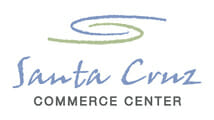Rockstar Arizona to Celebrate Grand Re-Opening August 12
Rockstar Arizona Cheer, Tumbling & Dance, formerly Fyrestorm All-Star Cheer, is set to celebrate their new name and expansion at 10 am on August 12th in Suite C of the Mesquite Building at Santa Cruz Commerce Center. Ak-Chin Indian Community Chair Robert Miguel and Mayor Christian Price will be on hand to share congratulations with owner, Beth Mundell, and to assist with the ribbon-cutting.
Prior to the ribbon-cutting, Rockstar Arizona will offer a free public tumbling clinic from 9-10 am. Following the ribbon-cutting, championship cheerleader and coach known for competing at the Cheerleading Worlds and Nfinity Legends, Rockstar Beatles Kennedy Thames, and Beatles Head Coach Scott Foster, will also be available for a meet and greet.
Rockstar Arizona’s programming encompasses co-ed, all-star, competitive, and recreational cheer and tumble for children 1 to 18 years old, as well as, classes for adults and those with special needs. Cheer programming involves dance, jumping, acrobatics, stunt-building and tumbling, which can showcase solos, duos, group stunt and partner stunt. Rockstar all-star teams have divisions for tiny, mini, youth, junior, and senior levels 1-5. In addition, there is an all-star hip hop program, which features teams and individuals. In addition, the program emphasizes character-building and self-confidence. “We want our athletes to be around good role models that will make them good human beings,” said Mundell.
Since its opening, the program has grown from an enrollment of about 65 to 100 athletes and from six to 21 staff members who include a number of specialists. “We coach a little differently,” Mundell said. “Rather than having coaches that generalize in a lot of areas. We have co-ed specialists, dance specialists, tumbling specialists, etcetera. We focus on family and that’s why we’re about half as expensive as other gyms.” In her new expanded space in Suite C of the Mesquite Building, Mundell expects to accommodate up to 200 athletes.
To find out more about Rockstar Arizona’s classes and programs, visit rockstararizona.com or call 856-624-3375.


